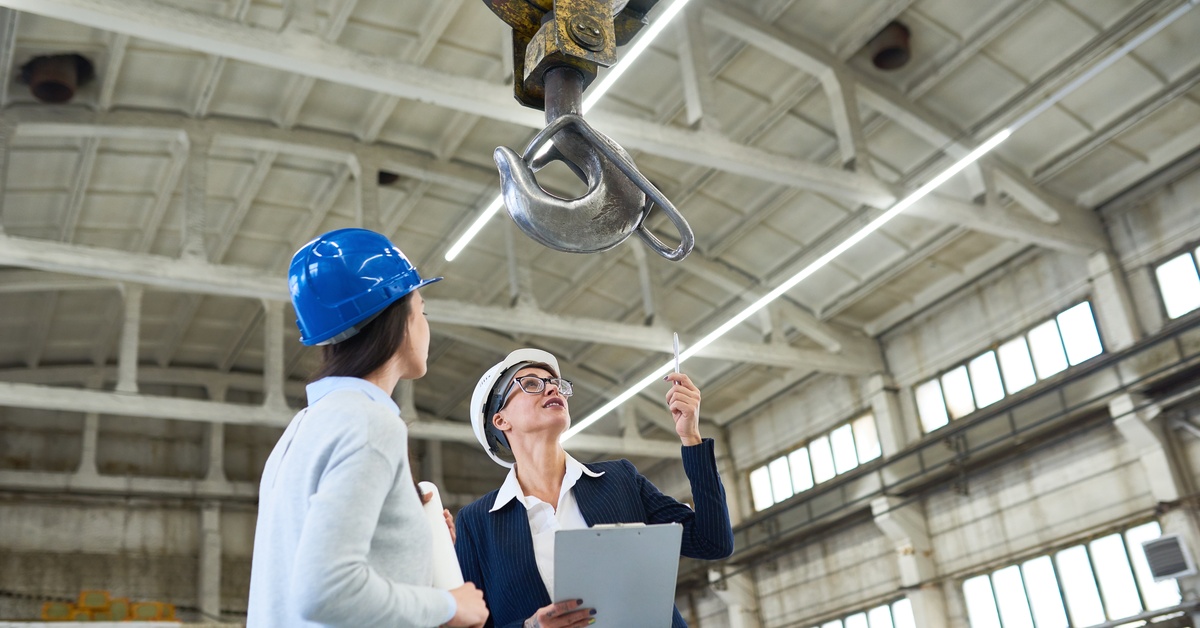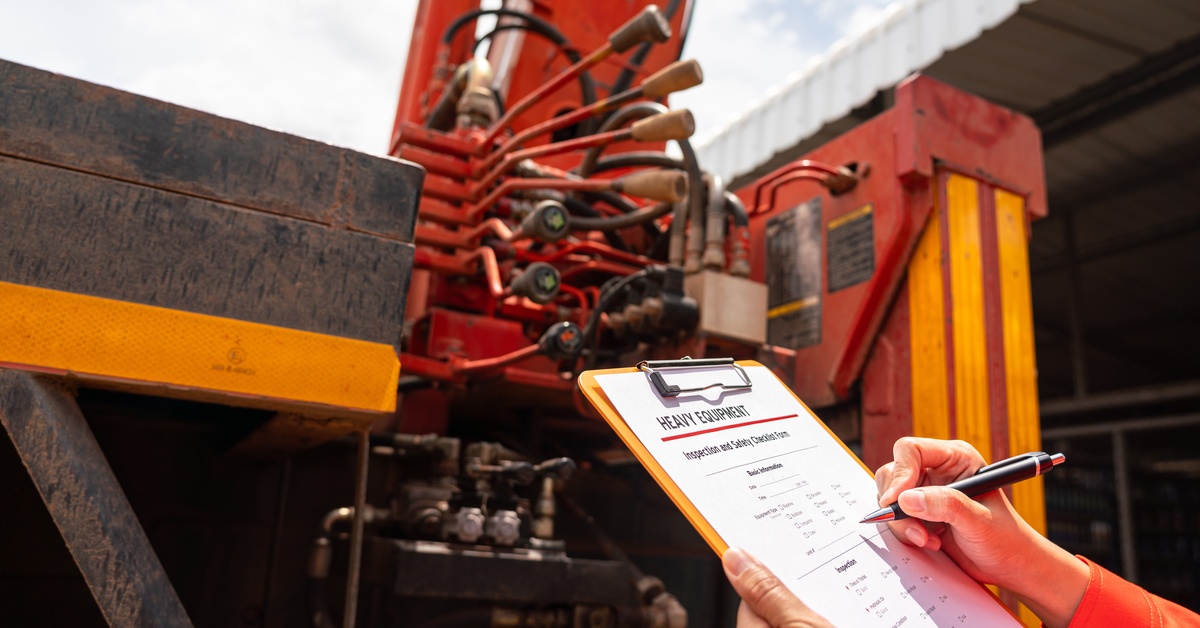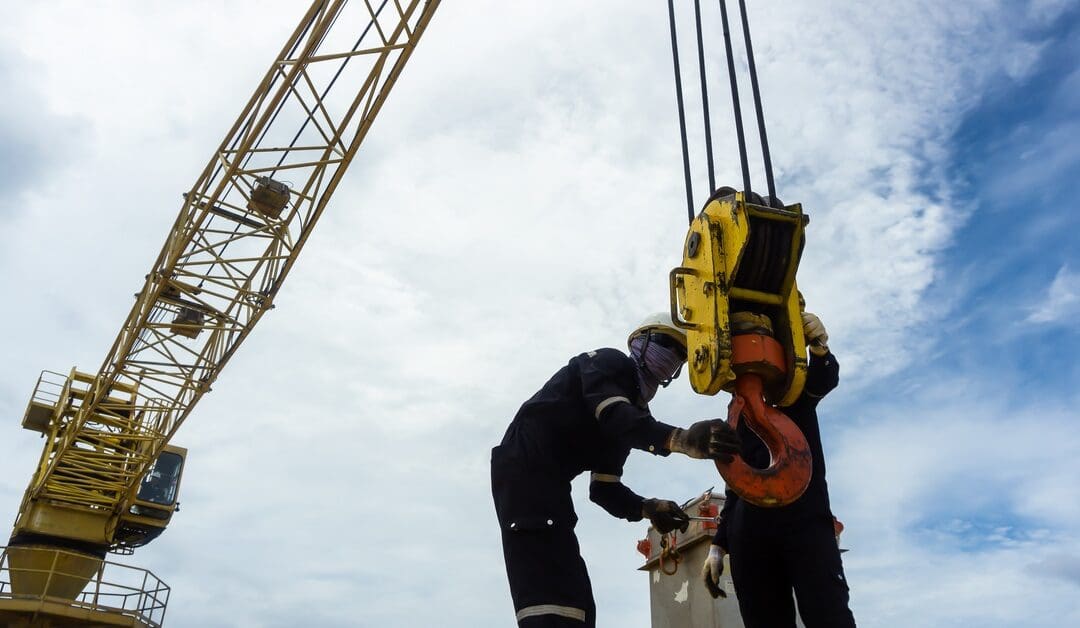When installing or replacing an HVAC system, especially in a commercial building or large residence, professionals use cranes for lifting heavy units onto rooftops. While the focus is usually on the HVAC equipment itself, the crane’s operational safety is just as critical. A faulty crane can lead to disastrous consequences. To prevent property damage, project delays, and severe injuries, thorough crane inspections are a fundamental part of ensuring a safe project.
This guide will explain the importance of crane inspections for HVAC projects that demand heavy lifting. Understanding the value of this process ensures that your project operates on a foundation of safety and professionalism.
Crane Inspections
A crane inspection is a comprehensive evaluation of a crane’s mechanical, structural, and safety components. Qualified and certified inspectors perform these meticulous checks of the equipment against manufacturer specifications and regulatory standards, such as those set by the Occupational Safety and Health Administration (OSHA).
The goal is to identify any potential defects, wear and tear, or malfunctions that could compromise the crane’s safety and performance. These inspections are not a one-time event; professionals conduct inspections at regular intervals to guarantee ongoing operational integrity before using the equipment for projects.
Inspection Intervals
Professional operators categorize these inspections based on their frequency and depth.
- Initial inspections take place before a new or significantly altered crane is put into service. The full inspection guarantees that the equipment meets all safety standards from the outset and functions correctly.
- Frequent inspections are visual and operational checks conducted daily or monthly. The crane operator typically performs a daily check before their shift begins. The inspection includes examining the control mechanisms, fluid levels, and safety devices, as well as visible signs of damage or wear.
- Periodic inspections are more detailed; they’re performed on a monthly to annual basis. A certified inspector dismantles parts of the crane to check for internal wear, cracks, corrosion, and any hidden issues. This includes a thorough review of hooks, ropes, braking systems, and structural components.
- Post-repair inspections occur if a crane undergoes major repairs or modifications. The crew must inspect the crane again before returning to operation, verifying that the team repaired the crane correctly.

Why Crane Safety Is Critical for HVAC Installations
Lifting a multi-ton HVAC unit hundreds of feet in the air is a high-risk task. The area below the lift, which could include your roof, landscaping, or even public spaces, is vulnerable to significant damage if something goes wrong. A crane failure can turn a standard installation into a costly and dangerous disaster.
Protect the Property and Investment
The most immediate benefit of a certified crane inspection is the protection of your property. A crane that fails during a lift can drop its load, causing catastrophic damage to the roof, the building’s structure, and the expensive HVAC unit itself. The cost of repairing this damage often far exceeds the initial project budget. A careful inspection ensures the crane is structurally sound and that all safety mechanisms function correctly.
Ensure On-Site Safety
HVAC projects involve multiple people on-site, including technicians, project managers, and sometimes the property owners themselves. A crane accident poses a grave risk of injury or death to anyone in the vicinity. Rigorous inspections are a crucial step in fulfilling the moral and legal obligation to maintain a safe work environment. When you partner with a crane service that prioritizes inspections, you are choosing a company that values human life above all else.
Avoid Delays
A crane malfunction can bring the entire project to a halt. Even a minor issue can cause significant delays as you wait for repairs or a replacement crane to arrive. These delays have a ripple effect, disrupting schedules for other contractors and potentially pushing your project completion date back by weeks. Routine inspections identify and address potential problems before they lead to a breakdown, helping to keep your project on time and on budget.

The Inspection Process: What to Expect
A professional crane inspection is a systematic and detailed process. While the specifics can vary depending on the type of crane, a typical periodic inspection includes the following tasks:
- Reviewing documentation: The inspector will start by checking the crane’s logbook, which contains records of past inspections, maintenance, and repairs.
- Structural assessment: This involves a visual check of all load-bearing components, such as the boom, jib, and support structure, for any signs of cracks, bending, or corrosion.
- Mechanical and electrical checks: The inspector will examine the engine, hydraulic systems, and electrical wiring for leaks, wear, or damage. They will also test the functionality of all control systems.
- Wire rope and rigging inspection: The wire ropes, hooks, and slings are critical for lifting. Team members have to inspect these closely for fraying, broken strands, and other signs of fatigue.
- Operational tests: A crew member will operate the crane to test the brakes, limit switches, and other safety devices to ensure they function as intended under load conditions.
At the end of the inspection, the inspector provides a detailed report outlining their findings. If inspectors find any critical issues, higher-ups will take the crane out of service, so they can repair and re-inspect the equipment.
Your Role in Ensuring Crane Safety
As a homeowner or property manager, you can take an active role in ensuring crane safety on your project. When hiring a crane service for your HVAC installation, ask for proof of their most recent inspection certification.
A reputable company will readily provide this documentation. It’s a clear indicator that they adhere to industry standards and share your commitment to safety throughout the project. Don’t hesitate to ask questions about their safety protocols and operator training.
A Foundation of Trust and Reliability
Crane inspections are an indispensable part of any HVAC project involving heavy lifting. They are essential for protecting your property, ensuring the safety of everyone on-site, and preventing expensive delays.
By working with a crane service that maintains a rigorous inspection and maintenance schedule, you ensure your project proceeds smoothly and safely from start to finish. With Heave Ho! Crane & Rigging, you can trust our expert team to install your HVAC system and work safely throughout the project.
Our Louisiana crane company has worked across the Gulf Coast to deliver the best results for over 30 years. Contact us today to learn more about our rental services.

